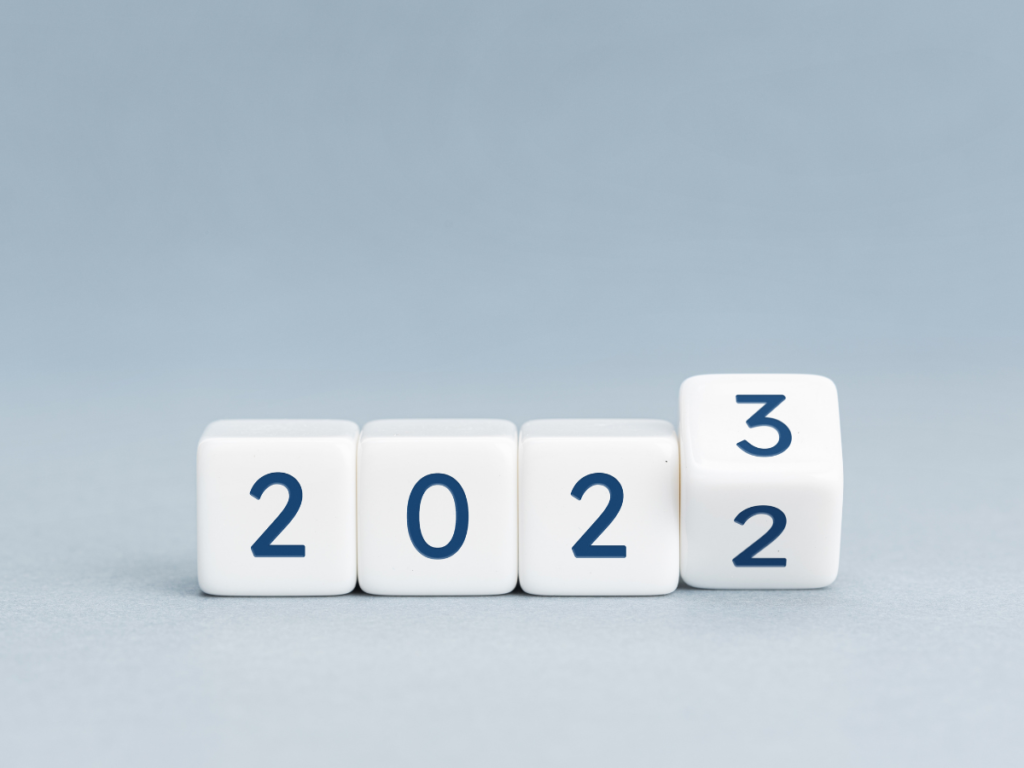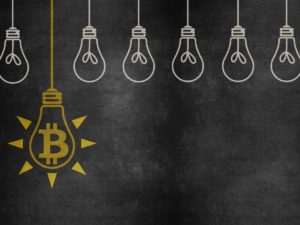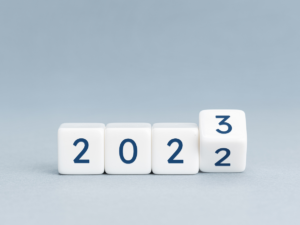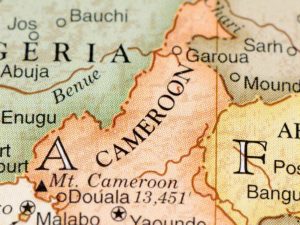In a rare moment of consensus, both the crypto faithful and sceptics agree that 2022 was an annus horribilis for the digital assets industry globally. But what can we expect in 2023, especially in the African context?
This article looks at ten themes that are likely to take centre stage in the African crypto space in 2023. To be clear – neither this list nor the examples provided in each section are meant to be exhaustive.
Let’s get going.
1. Tokenisation of Yield Generating Assets
Coming into 2023, there is a lot of buzz about bringing yield generating assets from the real world onto the blockchain.
The rise of DeFi proved the idea that liquidity sitting on-chain can be put to work to generate yield. However, many methods of generating yield on-chain are susceptible to crypto’s boom-bust cycles, meaning the yields are not sustainable.
In search of sustainable on-chain yield, some projects have embraced the idea of tokenising yield generating assets from the real world. Examples of such assets include cash, loans, corporate and government bonds.
This results in a win-win scenario because borrowers in the real world get access to a wider pool of funds, and at the same time, parties holding funds on-chain can enjoy earnings that are tied to activity in the real world.
This arrangement is potentially transformative in the African context where capital is scarce and borrowing costs are high. For example, the African Development Bank reports that only 40% of Africa’s trade is bank-intermediated, as compared to an average of 80% globally.
On the African front, Goldfinch has emerged as a leader in the crypto lending space. In 2022, the a16z backed project hit a milestone of $101 million in active loans, with Kenya, Nigeria and Uganda ranking among its most active markets worldwide.
Goldfinch’s business model involves extending credit lines to lending businesses in emerging markets. The credit lines consist of pools of USDC stablecoins supplied by investors on Goldfinch’s platform. Once available, lending businesses can draw the USDC, convert it to local currency and lend it out at interest.
Goldfinch is just one example of many projects that are building in the crypto lending space. MakerDAO is also making big moves in this space in the United States, although it hasn’t made its presence felt in Africa yet. Given Africa’s acute financing needs, this is a sector of crypto activity that’s poised to continue growing on the continent for some time to come.
2. The Binance Ecosystem
Despite crypto winter, Binance grew its global employee count from 3,000 to 8,000 in 2022. Last week, Binance’s CEO confirmed plans to further expand headcount by up to 30% in 2023.
In 2022, we saw Binance investing heavily at the grassroots level in Africa – it was a rare weekend when there wasn’t a Binance event happening somewhere on the continent.
Another aspect of Binance’s activity on the continent that may have flown under the radar relates to appointments. To give a few prominent examples, in September 2022, Binance named two Africans to its new Global Advisory Board.
One was Nigerian entrepreneur Ibukun Awosika and the other was South African banker Leslie Maasdorp. At the regional level, we saw Binance appoint Hannes Wessels as South Africa Regional Director and Nadeem Anjarwalla as East Africa Regional Director.
In short, Binance is adding some serious talent to its executive ranks on the Africa side and this provides insight into the scale of the firm’s ambitions on the continent.
Beyond events and appointments, there were a myriad of other stories relating to Binance Africa in 2022. Others that stood out include Binance’s CEO visiting with a number of African presidents in Francophone Africa, the launch of a crypto hub in Cameroon and talks of Nigeria’s NEPZA partnering with Binance to create a special crypto economic zone.
Suffice to say, there is a lot going on in the Binance Africa ecosystem and it doesn’t look like the company will be slowing down any time soon.
3. Licenses
Compared to other subjects in crypto, licensing ranks amongst the least interesting. Yet, as crypto regulatory frameworks spring to life around the world, licensing will become one of the most important subjects in the crypto industry going forward.
To see crypto licensing in practice, we can look at the real world example of pan-African crypto exchange Yellow Card in Botswana.
In October 2022, Yellow Card announced that it was the first company to receive a Virtual Asset Service Provider (VASP) license from regulators in Botswana. The licensing regime had been introduced by Botswana’s Virtual Assets Bill which passed in February 2022. Among other things, the Virtual Assets Bill prohibited VASPs from delivering services to residents of Botswana without a license from the government.
Botswana is not unique in this regard. The southern African country is following a set of international guidelines provided by the Financial Action Task Force (FATF). Mauritius passed a comprehensive crypto bill in December 2021 that mirrors Botswana’s. Similarly, South Africa has signalled that Crypto Asset Service Providers (CASPs) will need to apply for licenses between June and November 2023.
So it’s safe to say we are heading to a world where the regulatory burden for crypto projects running a pan-African strategy will grow. As such, projects will need to start contemplating these requirements as they put together their expansion strategy.
Ultimately, the emergence of licensing regimes across Africa changes the calculus for all ecosystem players, including users, token holders, VCs and founders. There is also the question of how regulators will go about enforcing these new rules at the domestic level, given crypto’s cross-border nature.
4. Mercy Corps Ventures’ Pilots
Mercy Corps Ventures (MCV) is the venture capital arm of Mercy Corps, a global NGO that was founded in 1979. Since 2015, MCV has supported over 35 ventures to scale and raise over $330 million in follow-on capital. MCV’s portfolio companies mostly fall into the categories of adaptive agriculture and food systems, frontier fintech and climate smart systems.
In 2022, we saw MCV initiate a number of DeFi-focused pilot programs with up-and-coming crypto projects in Africa. Examples of projects that participated in pilots with MCV include Ejara, Empowa, Fonbnk and Kotani Pay.
Each pilot is set up to test specific hypotheses. When a pilot launches, MCV publishes an announcement detailing the hypotheses being tested, what is being measured and what the learning questions are. After a pilot is complete, MCV publishes a discussion of the findings.
MCV occupies a unique place in the ecosystem because it has both the clout to bring together key players in crypto ecosystem and the institutional capacity to run pilots with them.
It’s still an open question as to what crypto’s killer app in Africa will be and so a systematic approach to exploring this question makes sense. This is exactly what MCV is doing. It seems as if it’s only a matter of time before these pilots, when viewed together, will provide a picture that helps to advance our understanding of what is possible with crypto in Africa.
5. Investment DAOs
DAO stands for Decentralised Autonomous Organisation, a type of organisational structure where the organisation’s aims are coordinated and executed through blockchain technology. Often likened to a group chat with a bank account, legally speaking, DAOs are odd entities.
As a16z explains: “DAOs share characteristics with partnerships, corporations, trusts and cooperatives, but the operational and organizational functionality derived from the technology itself presents issues in being classified within those existing entity structures.”
In other words, DAOs are a bit of a categorisation puzzle like the platypus – a mammal that has a beak, lays eggs, produces venom and uses electricity to hunt. The story goes that when British scientists were presented with the first imported specimen of an Australian platypus in 1799, they thought it was a hoax.
Similar to how we can create corporations to serve all kinds of purposes, DAOs too can be created to serve a variety of aims. Relevant to our discussion are investment DAOs, which are sometimes referred to as Venture DAOs. As the names suggest, such DAOs are created by a community for the purpose of coordinating capital in order to make investments.
Investment DAOs can be structured in many ways and this will influence how the organisation makes decisions and distributes profits. As to the why, the literature on Investment DAOs posits that these entities could be the next evolutionary step for venture capital.
The argument goes that while traditional VCs are good at deploying capital, they are not always structured to be able to deliver the post-funding support that start-ups need. Here, an Investment DAO may be better suited to provide the necessary support given they have a deep bench of DAO members with a range of expertise.
In the African context, there are a number of Investment DAOs being built. These include Africa3, AfricaDAO and PandoDAO. In 2022, Africa received less than 1% of global VC funding despite being home to nearly 17% of the global population. As such, the continent presents fertile ground for Investment DAOs to prove their utility.
6. Social & Environmental Impact through Bitcoin Mining
Conventional wisdom has long held that Bitcoin mining is not viable in Africa due to a combination of high electricity costs and intermittent supply. The available data supports this view, with the Cambridge Centre for Alternative Finance reporting that in December 2021, Africa accounted for only 0.18% of Bitcoin’s hash rate.
Despite this, there is a new picture emerging regarding the role that Bitcoin mining can play on the continent. Beyond the financial gains that come from Bitcoin mining, much to everyone’s surprise, we are starting to learn that Bitcoin mining can deliver beneficial social and environmental impact.
There are two stories that illustrate this counterintuitive concept. First is a company called Gridless in Kenya. The company acts as a buyer of first and last resort for energy produced from mini-grids and in turn uses this excess energy to run Bitcoin mining operations onsite, thus generating revenue.
This has the effect of lowering tariffs for other users that draw power from the mini-grid, thus lowering the barrier of access to electricity. As the community’s needs grow, Gridless scales back how much energy it pulls from the grid. In December 2022, Gridless announced a $2 million seed round co-led by Jack Dorsey’s Block.
The second story is about Virunga National Park, which is found on the eastern side of the Democratic Republic of Congo. In an interview with MIT’s Technology review, Virunga’s Emmanuel de Merode shared how the park was on the brink of bankruptcy due to the collapse of tourism over four years. Tourists had disappeared due to a combination of security concerns, ebola and COVID-19 between 2018 and 2021, taking 40% of annual park revenue with them.
In September 2020, Virunga started using the excess electricity produced by the park’s hydroelectric plants to mine Bitcoin. In 2021 the park generated $500,000 from its mining operations. In another datapoint, in March 2022, the park was on target to generate $150,000 in monthly revenue, which is “close to what tourism had provided at its peak.”
With the cases of Gridless and Virunga, we find concrete examples of how Bitcoin mining and renewable energy can be leveraged to deliver beneficial social and environmental impact. Given the success of Gridless and Virunga and the ease with which their models can be reproduced, it’s a safe bet that similar projects will emerge on the continent in 2023.
7. Loyalty Points
In the global north, talk of loyalty points programs typically conjures up images of airlines, credit cards and the like – hardly the province of the underbanked. Yet, there is one project in Kenya – Nuzo – that’s putting a new spin on how loyalty points can be leveraged by small-scale retailers to drive sales and improve customer retention.
Nuzo was launched in Kenya in June 2022 and as of December 2022, it had reached 100,000 users and participation from over 2,500 retailers. According to the company, retailers that have signed up for Nuzo have improved customer retention by 35% and sales by 200%.
To begin using Nuzo’s services, retailers need a Nuzo Wallet. Once setup on the wallet, retailers can begin accepting payments from other Nuzo Wallet users, which are made on the Celo blockchain. The cost of payments through the Nuzo Wallet can save retailers up to 90% of what they would be charged if their customers used M-Pesa. Customers benefit too, because they receive the Nuzo tokens as a reward whenever they make a purchase.
Nuzo tokens are issued on the Celo blockchain and pegged to the US Dollar, meaning they are effectively a cashback reward. In 2023, Nuzo plans to develop savings and credit products for retailers.
8. Local Stablecoin Offerings
According to data from Coin Metrics, on-chain stablecoin settlements crossed the $8 trillion mark in 2022. In comparison, annual volumes for Mastercard and American Express are typically ~$2.2 trillion and ~$1 trillion respectively. With an annual volume of ~$12 trillion, Visa maintains a healthy lead, but it’s clear that stablecoins are closing in.
While there is scant Africa-specific data on stablecoins, there are many accounts of just how popular stablecoins are on the continent. For example, in September 2022, South Africa’s Moneyweb reported that African companies were embracing stablecoins due to local shortages of US dollars. In another example, the co-founders of Canza Finance shared a story of visiting a rural part of Nigeria and encountering a currency trader whose lifetime USDT trading volume was $8 million.
Given the success of dollar denominated stablecoins, there is a legitimate question to be asked as to whether local currency stablecoins are viable in Africa. In 2023, one project that will test this question is Canza Finance with its Baki product.
Baki is a multi-currency stablecoin system that seeks to facilitate exchange between African currencies at central bank rates. The goal behind this system is to overcome the high foreign exchange costs faced by businesses which are often forced to trade at unfavourable rates in parallel markets.
In April 2022, we learnt that TON Foundation was in talks with Cameroon, Congo-Brazzaville and DRC about plans to launch “localized stablecoins” on the TON blockchain. Speaking to Forbes, an anonymous source explained that the stablecoins wouldn’t be CBDCs or private stablecoins like USDT, but would follow a “hybrid approach” and be “regionally applicable” and “regionally relevant.”
This doesn’t give us much to go on, but it’s worth paying attention to. TON blockchain has links to Telegram messenger, and the article quoted above suggests that the stablecoins for Cameroon, Congo-Brazzaville and DRC would be integrated with Telegram.
9. Crypto Remittances
Crypto remittances have been a subject of discussion in Africa for years. In fact, 2023 will mark ten years since Bitpesa, now AZA Finance, launched in Kenya and started facilitating remittances via Bitcoin.
Given the crypto remittance discussion has been ongoing for so long, what more can be said on the topic in 2023? One observation we can make is that there is now a wide range of crypto companies using a variety of approaches to facilitate remittances to Africa.
To give a few examples, in June 2022, remittance service MoneyGram announced a partnership with Stellar Network and Circle, where MoneyGram users can cash out USDC for local currency at MoneyGram locations. As of February 2015, MoneyGram had 25,000 locations in Africa.
In November 2022, payment gateway MFS Africa and Ripple announced a partnership that will see MFS Africa leveraging Ripple’s On-Demand Liquidity (ODL) solution for cross-border mobile money payments in Africa. As of March 2021, MFS Africa was connected to over 320 million mobile money wallets in Africa, which at the time represented roughly 60% of all such wallets on the continent.
In December 2022, Nigeria’s Bitnob announced partnerships with Strike in the United States and CoinCorner in Europe. These partnerships will see the companies leverage Bitcoin’s lightning network for transfers to Africa, with Bitnob handling the cash outs in Nigeria, Kenya & Ghana.
Given the variety of approaches being used, a de facto experiment is now underway to explore what is the best way to integrate crypto into remittances. Another noteworthy aspect in 2023, when we look at the footprints of MoneyGram and MFS Africa, is the scale at which crypto powered remittances can now be distributed.
10. Tokenisation of Interests in Natural Resources
This review has already covered the tokenisation of certain yield generating assets for the purposes of delivering on-chain yield.
Another subset of tokenisation activity to watch in 2023 is the tokenisation of interests in natural resources. This activity doesn’t receive as much coverage in the crypto media.
Nevertheless, mining is a key industry in Africa, and so if the mining industry embraces tokenisation, such tokens would easily constitute the largest category of cryptoassets originating from Africa (in dollar terms).
In 2022, a number of Africa-focused projects emerged at the intersection of resource mining and crypto. One was South Africa’s Zambesi Gold, which acquires gold mines and uses 75% of the “profit gold” to acquire additional mines and the remaining 25% to back its ZGD token.
Another company that made news was Canada’s Madison Metals, which has agreements in place to tokenise up to 9,000 tonnes of uranium in Namibia.
Of course, it was the Central African Republic (CAR) that captured everyone’s imagination in mid-2022 when the country announced plans to tokenise its resources as part of Project Sango. Sango has stalled due to legal issues, with CAR’s top court challenging the constitutionality of plans to sell citizenship.
Mining is capital intensive activity and requires long lead times to develop projects. Enegra Group’s Matthew Averay argues that tokenisation levels the playing field for junior miners because it provides an alternative to issuing debt or equity in order to finance projects.
In its marketing materials for Sango, the government of CAR told a compelling story of an African country that sits on billions of dollars of natural resources while being home to a population that suffers from extreme poverty. Tokenisation introduces new methods of bringing liquidity to illiquid assets. As such, the timing seems ripe for the emergence of a repeatable playbook for the tokenisation of natural resources in Africa.
If you enjoyed this article, consider subscribing to our weekly newsletter, where you can find more analysis on developments in the African crypto space.






